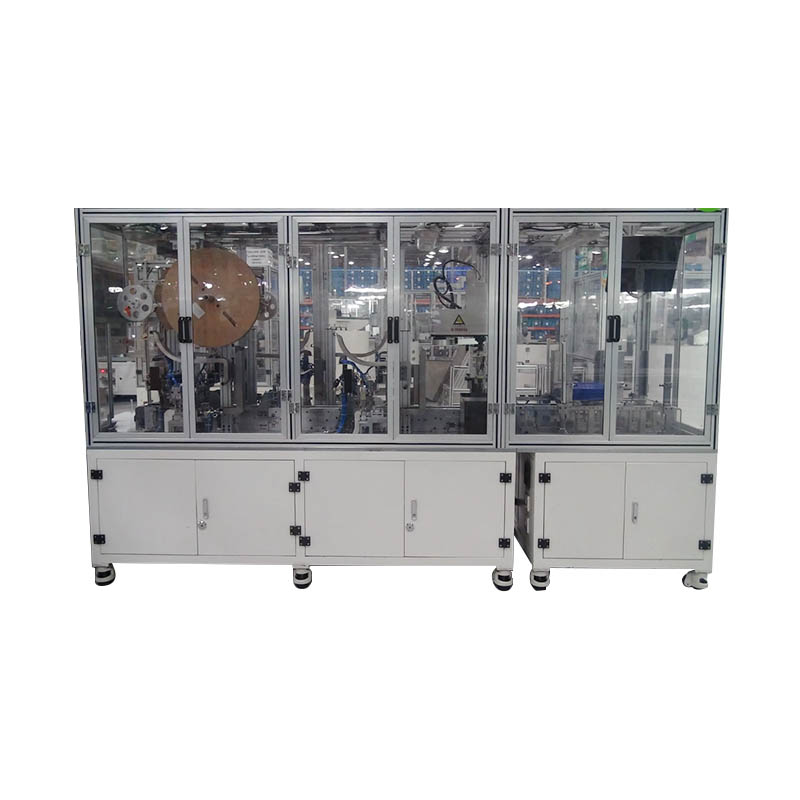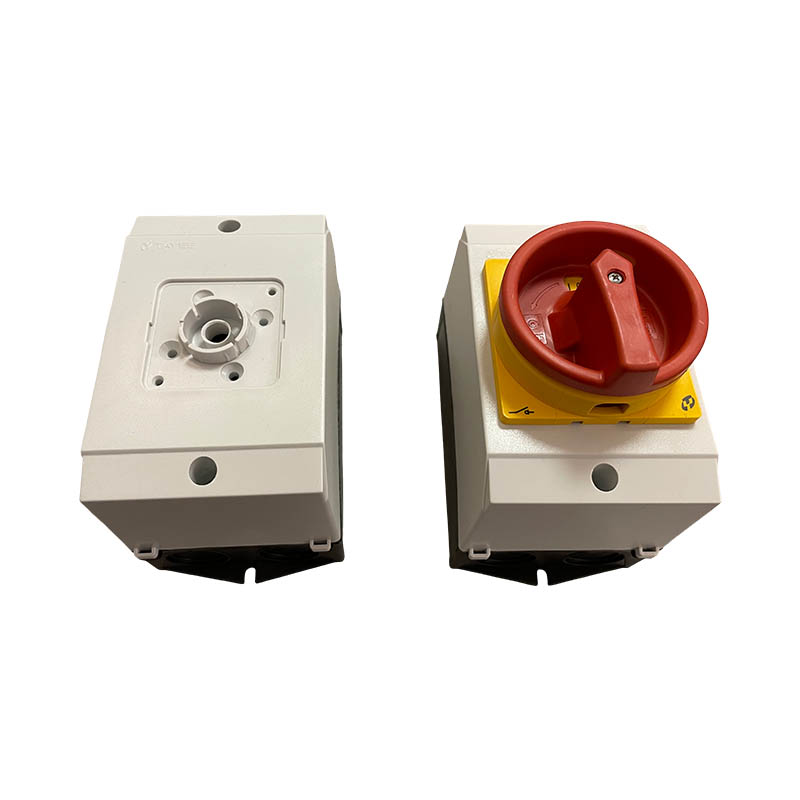How can electric control cabinets reduce on-site wiring and improve installation and commissioning efficiency?
Release Time : 2025-10-27
In modern industrial automation systems, electric control cabinets are not only the "brain center" of equipment operation but also the core hub connecting sensors, actuators, drives, and the user interface. Traditional electrical installation often relies on on-site wiring, manual wiring, and decentralized commissioning, which is time-consuming and labor-intensive, and prone to problems such as incorrect wiring, missing wiring numbers, and messy wiring, seriously impacting project schedules and system reliability. With the advancement of smart manufacturing and engineering standardization, reducing on-site wiring and improving installation and commissioning efficiency with electric control cabinets has become a critical factor in project delivery speed and operational stability.
The integrated electric control cabinet, with its "prefabricated in-house, ready-to-install" model, fundamentally changes traditional construction methods. Before the equipment leaves the factory, all components such as PLCs, inverters, circuit breakers, relays, and terminal blocks are precisely installed in the cabinet according to the drawings. The main circuit, control circuit, and signal lines are all laid and crimped. Cable routing is standardized, cable troughs are neatly arranged, and numbering is clear. Every wire undergoes continuity testing and functional verification. This means that when the control cabinet arrives on-site, complex internal wiring is no longer necessary. Simply connect the external power supply, motor outputs, sensor signal cables, and communication bus to power it up and operate, significantly shortening the on-site construction cycle.
Modular design is a core strategy for reducing wiring. Modern control cabinets utilize functional zoning, with separate compartments for power, PLC, inverter, I/O, and terminal blocks. Standard connectors or prefabricated cables connect modules. For example, PLC inputs and outputs connect to terminal blocks or remote I/O modules via prefabricated multi-core cables. The power cables between the inverter and motor utilize standardized connectors, and control signals are quickly connected via aviation plugs. This "plug-in" design eliminates tedious on-site processes such as stripping, soldering, and insulation treatment, speeding up wiring and reducing the risk of human error.
The use of prefabricated cables and harnesses further enhances efficiency. Manufacturers pre-produce clearly labeled connecting cables of appropriate lengths based on project drawings. Terminals or connectors are crimped or installed at both ends, allowing on-site installation by simply plugging them in according to the number. Whether connecting components within the cabinet or extending cables between the cabinet and field equipment, "plug and play" is a reality. This standardized operation method is particularly suitable for batch projects or production line replication, ensuring consistent wiring across each control cabinet and reducing troubleshooting time during commissioning.
The control cabinet utilizes a standardized cabinet and DIN rail mounting system, allowing all components to snap onto the rail without the need for drilling or screwing. The terminal blocks support double-layer wiring or spring-loaded connections, saving space and ensuring secure wiring. Ample wiring channels and margins are reserved within the cabinet to facilitate future maintenance and expansion. Clear line number identification and electrical drawings correspond to cabinet labels, enabling on-site personnel to quickly identify wiring routes and shorten troubleshooting time.
The advantages of the integrated control cabinet are even more pronounced during the commissioning phase. Since basic functional testing has already been completed in the factory, system integration can be performed directly after powering on site, eliminating the need to check each connection individually. The PLC program is pre-installed, and the HMI interface is fully configured; only parameters need to be loaded or minor optimizations are required for operational operation. Some high-end control cabinets also support remote diagnostics and parameter downloads, further enhancing commissioning flexibility.
Furthermore, reducing on-site wiring also means greater safety and cleanliness. On-site construction environments are complex, and exposed wires are susceptible to moisture, pressure, and accidental contact, posing a risk of short circuits. Prefabricated installation, however, relocates high-risk work to a controlled factory environment, requiring only critical connections on-site, mitigating safety risks. Furthermore, the neatly organized cabinet layout and standardized wiring routing not only facilitate inspection and acceptance but also provide excellent conditions for subsequent maintenance.
In summary, through factory integration, modular design, prefabricated wiring harnesses, and standardized interfaces, electric control cabinets systematically reduce on-site wiring workload, achieving a shift from "construction-based installation" to "assembly-based deployment." This not only improves efficiency but also ensures project quality and reliability, providing solid support for the rapid delivery and stable operation of industrial projects.
The integrated electric control cabinet, with its "prefabricated in-house, ready-to-install" model, fundamentally changes traditional construction methods. Before the equipment leaves the factory, all components such as PLCs, inverters, circuit breakers, relays, and terminal blocks are precisely installed in the cabinet according to the drawings. The main circuit, control circuit, and signal lines are all laid and crimped. Cable routing is standardized, cable troughs are neatly arranged, and numbering is clear. Every wire undergoes continuity testing and functional verification. This means that when the control cabinet arrives on-site, complex internal wiring is no longer necessary. Simply connect the external power supply, motor outputs, sensor signal cables, and communication bus to power it up and operate, significantly shortening the on-site construction cycle.
Modular design is a core strategy for reducing wiring. Modern control cabinets utilize functional zoning, with separate compartments for power, PLC, inverter, I/O, and terminal blocks. Standard connectors or prefabricated cables connect modules. For example, PLC inputs and outputs connect to terminal blocks or remote I/O modules via prefabricated multi-core cables. The power cables between the inverter and motor utilize standardized connectors, and control signals are quickly connected via aviation plugs. This "plug-in" design eliminates tedious on-site processes such as stripping, soldering, and insulation treatment, speeding up wiring and reducing the risk of human error.
The use of prefabricated cables and harnesses further enhances efficiency. Manufacturers pre-produce clearly labeled connecting cables of appropriate lengths based on project drawings. Terminals or connectors are crimped or installed at both ends, allowing on-site installation by simply plugging them in according to the number. Whether connecting components within the cabinet or extending cables between the cabinet and field equipment, "plug and play" is a reality. This standardized operation method is particularly suitable for batch projects or production line replication, ensuring consistent wiring across each control cabinet and reducing troubleshooting time during commissioning.
The control cabinet utilizes a standardized cabinet and DIN rail mounting system, allowing all components to snap onto the rail without the need for drilling or screwing. The terminal blocks support double-layer wiring or spring-loaded connections, saving space and ensuring secure wiring. Ample wiring channels and margins are reserved within the cabinet to facilitate future maintenance and expansion. Clear line number identification and electrical drawings correspond to cabinet labels, enabling on-site personnel to quickly identify wiring routes and shorten troubleshooting time.
The advantages of the integrated control cabinet are even more pronounced during the commissioning phase. Since basic functional testing has already been completed in the factory, system integration can be performed directly after powering on site, eliminating the need to check each connection individually. The PLC program is pre-installed, and the HMI interface is fully configured; only parameters need to be loaded or minor optimizations are required for operational operation. Some high-end control cabinets also support remote diagnostics and parameter downloads, further enhancing commissioning flexibility.
Furthermore, reducing on-site wiring also means greater safety and cleanliness. On-site construction environments are complex, and exposed wires are susceptible to moisture, pressure, and accidental contact, posing a risk of short circuits. Prefabricated installation, however, relocates high-risk work to a controlled factory environment, requiring only critical connections on-site, mitigating safety risks. Furthermore, the neatly organized cabinet layout and standardized wiring routing not only facilitate inspection and acceptance but also provide excellent conditions for subsequent maintenance.
In summary, through factory integration, modular design, prefabricated wiring harnesses, and standardized interfaces, electric control cabinets systematically reduce on-site wiring workload, achieving a shift from "construction-based installation" to "assembly-based deployment." This not only improves efficiency but also ensures project quality and reliability, providing solid support for the rapid delivery and stable operation of industrial projects.







